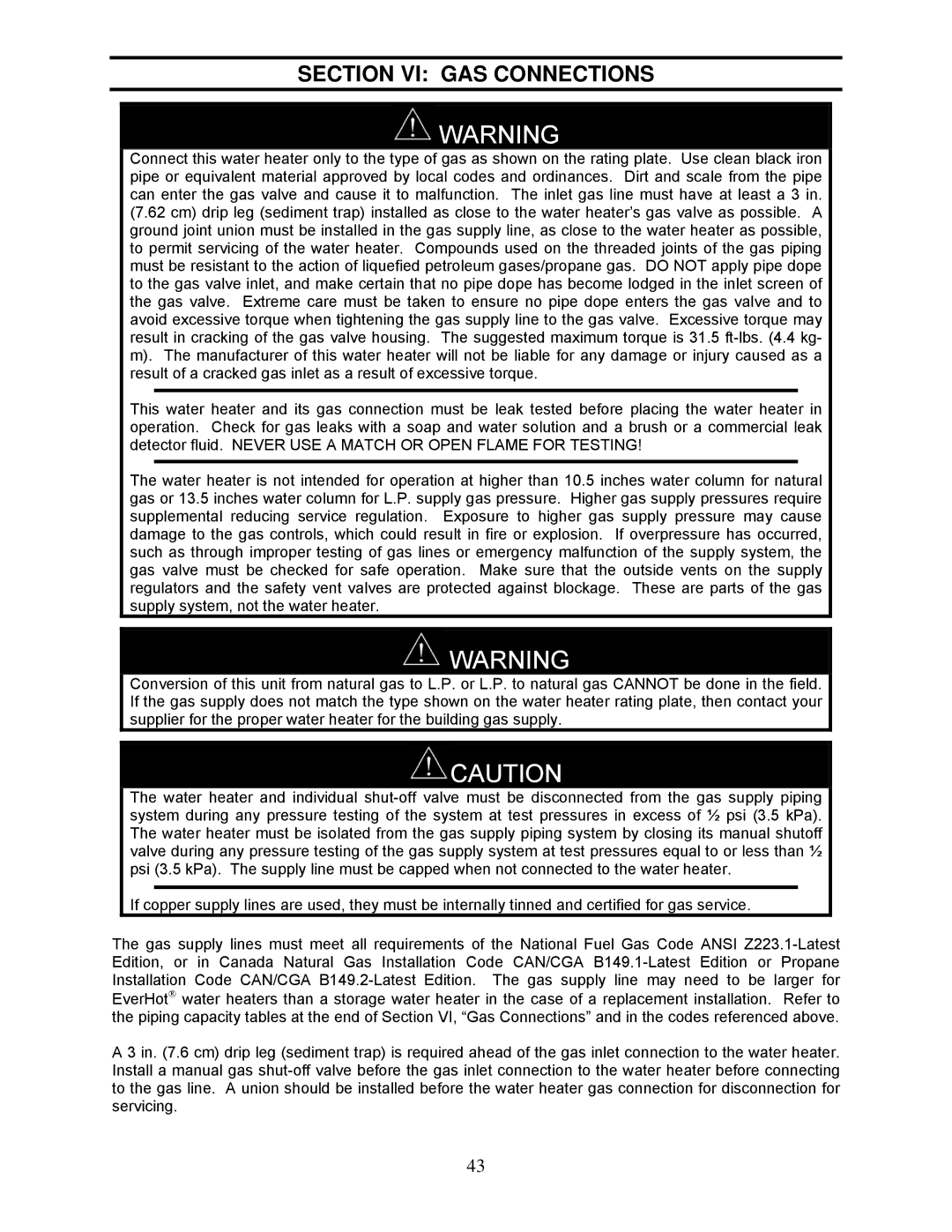
SECTION VI: GAS CONNECTIONS
![]() WARNING
WARNING
Connect this water heater only to the type of gas as shown on the rating plate. Use clean black iron pipe or equivalent material approved by local codes and ordinances. Dirt and scale from the pipe can enter the gas valve and cause it to malfunction. The inlet gas line must have at least a 3 in. (7.62 cm) drip leg (sediment trap) installed as close to the water heater’s gas valve as possible. A ground joint union must be installed in the gas supply line, as close to the water heater as possible, to permit servicing of the water heater. Compounds used on the threaded joints of the gas piping must be resistant to the action of liquefied petroleum gases/propane gas. DO NOT apply pipe dope to the gas valve inlet, and make certain that no pipe dope has become lodged in the inlet screen of the gas valve. Extreme care must be taken to ensure no pipe dope enters the gas valve and to avoid excessive torque when tightening the gas supply line to the gas valve. Excessive torque may result in cracking of the gas valve housing. The suggested maximum torque is 31.5
This water heater and its gas connection must be leak tested before placing the water heater in operation. Check for gas leaks with a soap and water solution and a brush or a commercial leak detector fluid. NEVER USE A MATCH OR OPEN FLAME FOR TESTING!
The water heater is not intended for operation at higher than 10.5 inches water column for natural gas or 13.5 inches water column for L.P. supply gas pressure. Higher gas supply pressures require supplemental reducing service regulation. Exposure to higher gas supply pressure may cause damage to the gas controls, which could result in fire or explosion. If overpressure has occurred, such as through improper testing of gas lines or emergency malfunction of the supply system, the gas valve must be checked for safe operation. Make sure that the outside vents on the supply regulators and the safety vent valves are protected against blockage. These are parts of the gas supply system, not the water heater.
![]() WARNING
WARNING
Conversion of this unit from natural gas to L.P. or L.P. to natural gas CANNOT be done in the field. If the gas supply does not match the type shown on the water heater rating plate, then contact your supplier for the proper water heater for the building gas supply.
![]() CAUTION
CAUTION
The water heater and individual
If copper supply lines are used, they must be internally tinned and certified for gas service.
The gas supply lines must meet all requirements of the National Fuel Gas Code ANSI
A 3 in. (7.6 cm) drip leg (sediment trap) is required ahead of the gas inlet connection to the water heater. Install a manual gas
43
